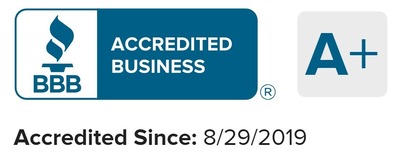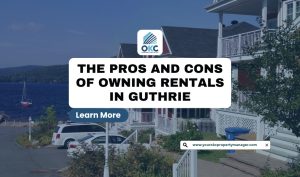If you’re a landlord or real estate investor, the idea of keeping more of your rental income probably sounds pretty appealing. And with over 15 years of experience in property management and serving property owners throughout Oklahoma City and neighboring metro areas like Edmond, Yukon, Moore, and others, we can confidently say: with the right strategies, it’s absolutely possible.
Here’s the good news: with smart planning and a clear understanding of how rental property taxation works, you can reduce your tax burden, sometimes all the way down to zero.
Yes, you read that right. Many savvy investors pay little to no taxes on their rental income each year, and they do it legally.
This isn’t about shady loopholes or offshore schemes. It’s about working with the U.S. tax code and using it the way it was written. By leveraging allowable deductions, depreciation, and time-tested investment strategies, you can minimize, or even eliminate your rental income tax liability.
Let’s break down how it works.
Understanding Rental Income Taxes
Before we dive into the strategies, let’s clarify what the IRS considers taxable rental income.
If you rent out a property, all the money you receive from tenants, monthly rent, late fees, pet rent, etc., is generally considered taxable income. You’ll report it on Schedule E of your Form 1040.
But, this is key, you’re also allowed to deduct a wide range of expenses. That’s where your opportunity lies.
NOTE: In Oklahoma City, median property taxes run around 1.14% of a home’s assessed value. That’s lower than many metro areas nationwide—but it still adds up. For a $200,000 rental, you might pay roughly $2,280 annually in property taxes alone. Tracking every dollar you spend on property taxes is a critical first step toward reducing your taxable income.
10 Ways to Pay Less Taxes on Rental Income
1. Maximize Your Deductions
The IRS allows landlords to deduct “ordinary and necessary” expenses related to managing and maintaining rental property. These deductions can offset your rental income and reduce your tax bill.
Here are some common deductible expenses:
- Mortgage interest
- Property taxes
- Insurance premiums
- Maintenance and repairs
- Property management fees
- HOA fees
- Legal and professional services
- Utilities you pay on behalf of tenants
- Advertising for tenants
Example:
Let’s say your rental property brings in $24,000 per year in gross rent. But you spend:
- $6,000 on mortgage interest
- $3,000 on property taxes
- $2,000 on insurance
- $1,500 on repairs
- $1,000 on management fees
- $500 on legal/accounting fees
That’s $14,000 in deductible expenses, cutting your taxable rental income down to just $10,000.
2: Use Depreciation to Your Advantage
Here’s where things get really interesting.
The IRS lets you depreciate the structure (not the land) of your rental property over 27.5 years. This is a paper loss; you don’t spend the money out-of-pocket, but you get to write it off anyway.
How Depreciation Works:
If you buy a rental property for $250,000 and the land is worth $50,000, you can depreciate the remaining $200,000.
$200,000 ÷ 27.5 years = $7,272 annual depreciation deduction
This amount comes off your rental income every year, even if your property is going up in value.
Combine With Other Deductions:
Using the example above, if your net income after other deductions is $10,000, and you add $7,272 in depreciation, your taxable income drops to just $2,728.
Not bad, but we can do better.
3: Qualify for Real Estate Professional Status
If you spend enough time managing your rental properties, you may be able to claim Real Estate Professional Status (REPS).
Here’s why this matters:
Normally, passive activity losses (like depreciation) can only offset passive income, not your W-2 or business income. But if you qualify as a real estate professional, your rental income isn’t considered passive, and you can use losses to offset all types of income.
To Qualify, You Must:
Work more than 750 hours per year in real estate activities
Spend more than half your total working hours on real estate
This is ideal for full-time landlords, flippers, or real estate agents who also own rentals.
4: Use the Short-Term Rental Loophole (Airbnb Advantage)
If you rent out property on a short-term basis (think Airbnb or VRBO), the IRS may treat your income differently.
Under IRS rules, short-term rentals may not be considered “rental activity” at all. That means losses may not be subject to passive activity limits.
Key Criteria:
- Average stay is 7 days or fewer, OR
- Average stay is 30 days or fewer, and you provide substantial services (cleaning, breakfast, tours, etc.)
If structured right, you may be able to write off big depreciation losses and offset active income, even without qualifying as a real estate professional.
This is known as the “short-term rental loophole,” and investors use it strategically to reduce taxable income to zero.
5: Cost Segregation + Bonus Depreciation
This one’s a little advanced, but powerful.
Cost segregation is a method that lets you accelerate depreciation by breaking down a property into individual components, like appliances, carpets, and fixtures, that depreciate faster (5, 7, or 15 years).
When combined with bonus depreciation (which allows for 100% immediate expensing of qualifying components), the tax savings can be massive, especially in the first few years.
Example:
Let’s say you buy a $500,000 rental property. A cost segregation study identifies $125,000 of assets that qualify for 5–15 year depreciation.
With bonus depreciation, you can deduct the full $125,000 in the first year.
If your rental income is $30,000 and you take a $125,000 depreciation deduction, you report a $95,000 loss, which can offset other income if you qualify.
Even if you don’t qualify as a real estate professional, these losses may carry forward to future years.
6: 1031 Exchange to Avoid Capital Gains
When you sell a rental property at a profit, you typically pay capital gains tax. But if you roll those proceeds into a new investment property using a 1031 exchange, you can defer the taxes.
Requirements for a 1031 Exchange:
- Must be like-kind property (any U.S. real estate held for investment)
- Must identify the replacement property within 45 days
- Must close on the new property within 180 days
- Must use a qualified intermediary (can’t touch the cash)
This strategy lets you grow your portfolio tax-deferred, potentially for life. In fact, if you keep exchanging up and then pass the property to heirs, the “step-up in basis” at death may wipe out the tax bill entirely.
7: Use Tax-Free Cash-Out Refinances
Instead of selling a rental to access your equity (and triggering taxes), many investors simply refinance.
Here’s why it’s smart: Loan proceeds are not taxable.
So, if your property appreciates and you refinance to pull out $100,000, you get that money tax-free.
Meanwhile, you still own the property, still collect rent, and still claim depreciation.
Just be mindful of cash flow; the increased loan payments should be covered by your rental income.
8: House Hacking and the Primary Residence Exclusion
If you live in part of your rental property, say, a duplex or fourplex, you might qualify for extra tax savings.
For example, if you live in one unit and rent the others:
You can still deduct the expenses related to the rented portion
You can depreciate the rented portion of the property
When you sell, you may qualify for the primary residence exclusion: up to $250,000 ($500,000 if married) of tax-free gain if you’ve lived there for 2 of the past 5 years.
9: Leverage Passive Loss Carryovers
Even if you can’t use all your depreciation or rental losses in one year, the IRS lets you carry them forward to future years.
This is useful if you’re in the early stages of investing and your income is low now, but you expect it to rise.
Example:
You report a $20,000 passive loss in Year 1 but only have $5,000 in passive income to offset. The remaining $15,000 carries forward to Year 2 and beyond, until you can use it.
Eventually, when you sell the property, these suspended losses get released and can offset capital gains.
10: Use Legal Entities Strategically
Forming an LLC or other legal entity won’t automatically reduce your taxes, but it can be helpful in the bigger picture.
For example:
- An LLC offers liability protection without affecting how your rental income is taxed (it’s still reported on Schedule E for single-member LLCs).
- If your rentals qualify as a business, you may be eligible for the 20% Qualified Business Income (QBI) deduction under Section 199A.
- Advanced investors may benefit from S Corporations or Partnerships in larger structures, but that’s a discussion for your CPA.
The key is to align your entity setup with your long-term strategy, not just short-term tax savings.
A Quick Note on Documentation
To stay on the right side of the IRS, documentation is crucial. Always:
- Keep copies of receipts, invoices, and mileage logs
- Track time spent managing properties (especially for REPS status)
- Keep separate bank accounts for your rental activity
- Work with a qualified real estate CPA who understands your goals.
Final Thoughts: Can You Legally Pay No Taxes on Rental Income
When you combine deductions, depreciation, cost segregation, and strategies like 1031 exchanges or cash-out refinancing, you can often reduce your taxable rental income to zero or below.
Plenty of real estate investors do it every year—legally.
But it takes planning. You have to understand the rules, work with experienced professionals, and stay organized.
Still, the rewards are worth it. Real estate isn’t just about appreciation or monthly cash flow; it’s one of the best tax-advantaged investments in the country.
So if you’re serious about building wealth, start viewing the tax code as a tool and use it to keep more of your money working for you.
DISCLAIMER:
This content is for informational purposes only and is not legal or tax advice. While it’s tailored to landlords, individual tax situations vary. Always consult a qualified CPA or real estate attorney familiar with tax laws before making financial decisions. Tax rules change often, and professional guidance is key.
FAQs
How does the IRS know if I have rental income?
The IRS can find out about your rental income in several ways. Common methods include tax document matching (like 1099s from property managers or platforms like Airbnb), audits, and tips from tenants or others. They may also notice property ownership records or mortgage interest deductions that suggest rental activity. If you collect rent, you're required to report it, even if you don’t receive official tax forms. Failing to do so could lead to penalties, interest, or an audit.
Can I reinvest rental income to avoid taxes?
Reinvesting your rental income, like using it to buy another property or make upgrades, won’t automatically help you avoid taxes. The IRS still considers rental income taxable, even if you don’t pocket the cash. However, you can reduce or offset your tax bill by deducting qualifying expenses, using depreciation, or doing a 1031 exchange when selling one property to buy another. To legally minimize taxes, it’s best to combine reinvestment with smart tax strategies and guidance from a real estate CPA.
What is the minimum rental income to pay taxes in Oklahoma?
If you're a non-resident, you must file an Oklahoma tax return if you earn $1,000 or more in gross rental income from Oklahoma properties. For residents, filing depends on your total income and filing status (e.g., single filers under 65 must file if gross income exceeds $7,350). Always consider gross income, not profit, when determining if you need to file.
Do I have to pay taxes on rental income if I have a mortage?
Yes. Even if you have a mortgage, rental income is still taxable. However, you can deduct mortgage interest, along with other expenses, which can significantly reduce or sometimes eliminate, your taxable rental income.

Author
Scott Nachatilo is an investor, property manager and owner of OKC Home Realty Services – one of the best property management companies in Oklahoma City. His mission is to help landlords and real estate investors to manage their property in Oklahoma.
 (
(









